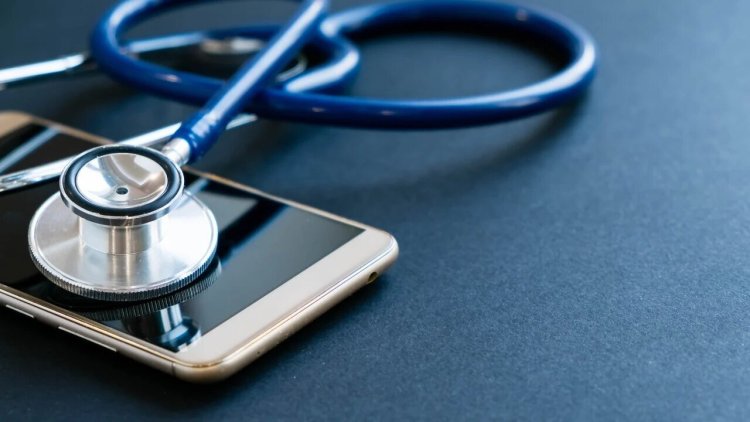Can Phone Diagnostic Apps Replace Repair Shops?
Explore if phone diagnostic software can replace repair shops or if experts like Phone Clinix are still essential for real fixes.

As smartphones become increasingly advanced and indispensable in our daily lives, the need to maintain, diagnose, and repair them has grown in parallel. Whether it's a cracked screen, a battery that drains too fast, or connectivity issues, most people have faced the frustration of smartphone problems. Traditionally, these issues were resolved by taking the device to a repair shop. But now, the landscape is shifting.
With the rise of phone diagnostic software, users can identify issues with their phones from the comfort of their homes. This has sparked a heated debate in the tech world: can diagnostic apps completely replace repair shops? Or do physical repair centers like Phone Clinix still hold a critical role?
Let’s explore the capabilities and limitations of diagnostic apps and why repair shops continue to be a necessary part of the mobile ecosystem.
What Is Phone Diagnostic Software?
Phone diagnostic software refers to apps or systems that test and evaluate a smartphone’s hardware and software components. These programs scan for malfunctions, irregularities, or performance issues, and then generate a report outlining the findings.
Common features of such apps include:
-
Battery health checks
-
CPU and memory performance
-
Wi-Fi and Bluetooth connectivity
-
Touchscreen sensitivity
-
Camera and microphone functionality
-
Sensor calibration (e.g., gyroscope, proximity sensor)
-
Storage and app usage analysis
With a few taps, users can uncover underlying problems that might not be immediately obvious.
Benefits of Using Phone Diagnostic Apps
There are plenty of reasons why phone diagnostic software is gaining popularity:
1. Convenience
Users can run a full scan in just a few minutes, anytime and anywhere. There's no need to travel to a repair shop or wait in line for service.
2. Cost-Efficiency
Most diagnostic apps are free or low-cost, making them an affordable alternative to immediate professional consultation.
3. Early Detection
By regularly scanning their device, users can catch small problems before they turn into expensive repairs. For instance, identifying a weakening battery early can prevent complete shutdowns.
4. Informed Decisions
A diagnostic report helps users understand the nature of the problem. If a repair is needed, they can approach a service center like Phone Clinix with clear information, reducing time and confusion.
Where Phone Diagnostic Apps Fall Short
While these apps offer many advantages, they aren’t perfect. Here’s where they often fall short:
1. No Physical Repairs
Perhaps the most obvious limitation is that diagnostic apps can only identify issues—they can't fix physical problems. A cracked screen, broken charging port, or faulty motherboard still requires hands-on technical repair.
2. Limited Accuracy
Not all diagnostic apps are created equal. Some offer only superficial scans and may miss deeper hardware issues. Without industry-grade tools, certain problems may go undetected.
3. User Misinterpretation
Not all users can interpret diagnostic reports correctly. Misunderstanding results can lead to improper self-repairs or ignoring serious issues.
4. Security Risks
Downloading diagnostic tools from untrusted sources can expose devices to malware. Professional repair services like Phone Clinix ensure safe diagnostics with trusted tools.
The Role of Repair Shops in the Age of Diagnostic Apps
Despite the rising popularity of diagnostic tools, physical repair centers remain essential. Phone Clinix, for example, blends the benefits of modern diagnostics with skilled, hands-on service.
Here’s why repair shops are still vital:
1. Expertise and Experience
Technicians at Phone Clinix have years of experience handling complex repairs. They not only fix problems but can also offer tailored advice to prevent future damage.
2. Access to Tools and Parts
Repairing modern smartphones requires specialized tools and original or high-quality replacement parts. These aren't accessible to the average user or software app.
3. On-the-Spot Repairs
While apps can identify a problem, you still need someone to fix it. Phone Clinix offers fast turnaround times, sometimes within hours, getting your device back in working order quickly.
4. Comprehensive Services
Beyond diagnostics, repair shops offer services such as:
-
Screen replacement
-
Battery replacement
-
Water damage treatment
-
Data recovery
-
System reinstallation
-
Hardware upgrades
These are services no app can provide on its own.
Combining Diagnostic Apps with Professional Repair
Rather than viewing diagnostic software and repair shops as competitors, it’s more accurate to see them as complementary. A diagnostic app is like a digital nurse—it can assess and identify issues—but a professional repair shop is the surgeon, performing the technical repairs that apps cannot.
In fact, forward-thinking service centers like Phone Clinix are embracing this combination. They offer diagnostic tools for users and follow up with expert-level in-store repairs for issues the app can't fix. This synergy saves customers time and money, while also improving their understanding of smartphone health.
What to Look for in a Good Diagnostic App
If you’re considering using phone diagnostic software, keep the following tips in mind:
-
Choose a reputable app: Stick to well-reviewed apps or those recommended by trusted repair centers like Phone Clinix.
-
Check compatibility: Ensure the app works with your phone's make and model.
-
Review privacy policies: Be cautious of apps that request access to unnecessary personal data.
-
Regular updates: An updated app is more likely to include the latest diagnostic tools and security patches.
The Future of Smartphone Diagnostics
As technology evolves, so will the capabilities of diagnostic tools. We can expect more advanced AI-powered diagnostic systems that not only detect issues but also automate certain fixes. There’s potential for built-in factory diagnostics to become standard across all devices, giving users more control over maintenance.
Still, the physical side of repair cannot be fully automated—at least not yet. As long as smartphones have hardware, the need for experts like those at Phone Clinix will remain strong.
Final Verdict: Can Apps Replace Repair Shops?
The answer is both yes and no.
Yes, phone diagnostic software can replace the first step of a repair process. They offer fast, easy, and often accurate assessments of your device’s health. They empower users to better understand their smartphones and take proactive measures.
But no, they cannot fully replace the hands-on service, expertise, and physical tools of a professional repair shop. For broken screens, damaged hardware, deep system issues, or trusted professional care, you still need a place like Phone Clinix.
Conclusion
Smartphone diagnostic apps are a powerful tool in the hands of tech-savvy users. They improve awareness, reduce unnecessary service visits, and help catch issues early. But they are not a full replacement for professional repairs.
By combining the convenience of phone diagnostic software with the skilled expertise of Phone Clinix, users can enjoy the best of both worlds—quick insights and reliable solutions. So, next time your phone starts acting up, start with a scan, then turn to the pros when you need that extra hand.
What's Your Reaction?

















.jpg)